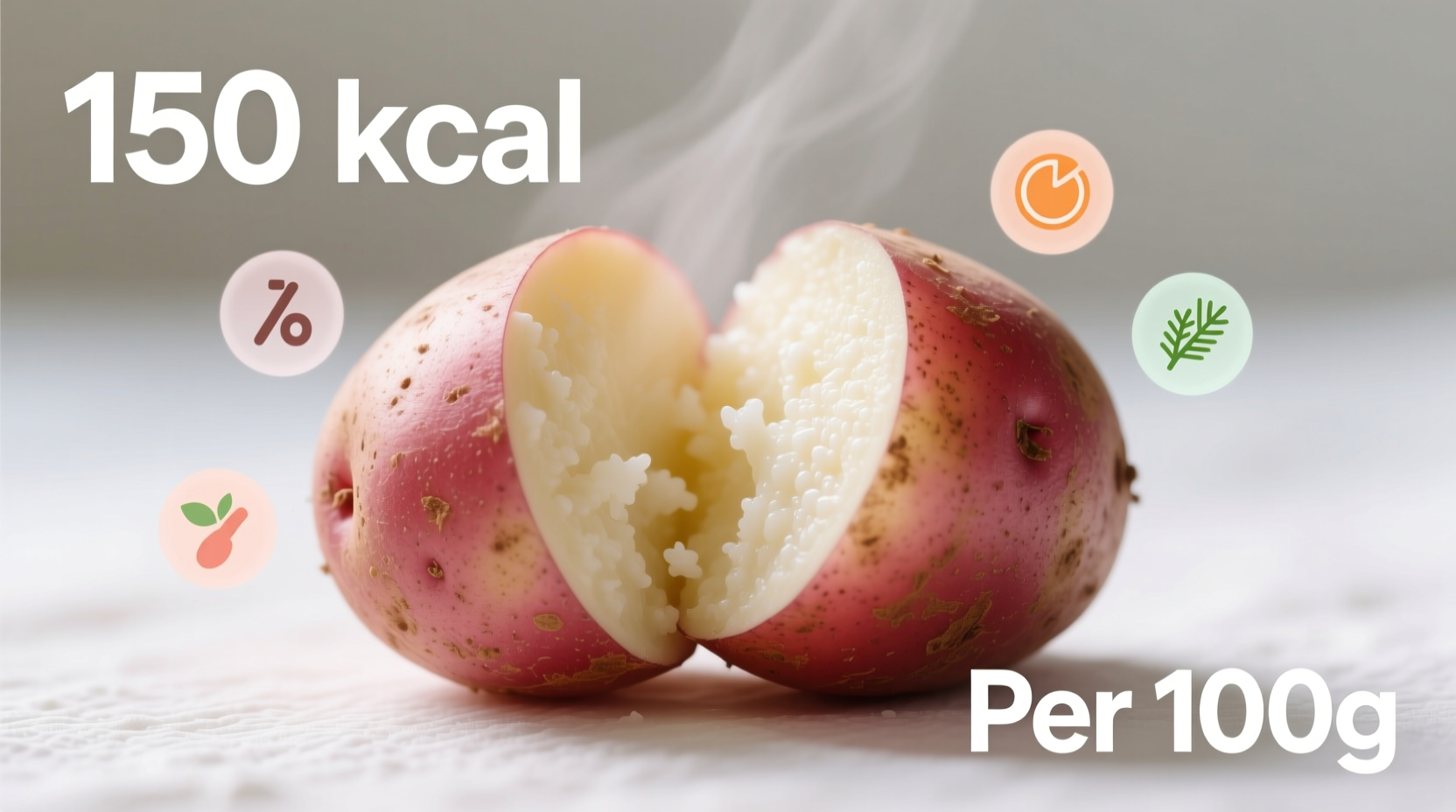Understanding the exact calorie content of red potatoes helps you make informed dietary choices without sacrificing flavor or nutrition. Whether you're tracking macros, managing weight, or simply curious about this versatile vegetable, knowing the precise nutritional profile matters.
Red Potato Nutrition: The Complete Breakdown
When you're counting calories or planning balanced meals, having accurate nutritional information is essential. Red potatoes offer more than just energy—they deliver valuable nutrients that support overall health. Let's examine what makes this common vegetable a smart addition to your diet.
| Nutrient | Per 100g Raw | Per Medium Potato (150g) | % Daily Value* |
|---|---|---|---|
| Calories | 70 kcal | 105 kcal | 5% |
| Carbohydrates | 15.9g | 23.9g | 8% |
| Dietary Fiber | 1.7g | 2.5g | 9% |
| Protein | 1.7g | 2.6g | 5% |
| Vitamin C | 11.4mg | 17.1mg | 19% |
| Potassium | 328mg | 492mg | 11% |
*Percent Daily Values based on a 2,000 calorie diet. Source: USDA FoodData Central
How Red Potatoes Compare to Other Varieties
Not all potatoes are nutritionally identical. Red potatoes have distinct characteristics that set them apart from other common varieties. Understanding these differences helps you choose the right potato for your dietary goals.
Red potatoes contain slightly fewer calories than russet potatoes but more than sweet potatoes by weight. Their thin skin contains valuable nutrients, making them ideal for eating with the skin on. The naturally occurring sugars in red potatoes give them a subtly sweeter taste compared to russets, without significantly impacting the calorie count.
According to research published in the Journal of Agricultural and Food Chemistry, the specific growing conditions and soil composition can cause minor variations in potato nutritional content. However, the differences remain relatively small across commercially available red potatoes.

Practical Calorie Management with Red Potatoes
When incorporating red potatoes into your meal planning, preparation method significantly impacts the final calorie count. A plain baked red potato maintains its naturally low-calorie profile, while frying or adding high-calorie toppings dramatically increases the energy content.
For weight management purposes, registered dietitians recommend these practical strategies:
- Keep the skin on to maximize fiber content (adding about 2g of fiber)
- Choose baking, roasting, or boiling instead of frying
- Use Greek yogurt instead of sour cream as a topping
- Pair with lean proteins and non-starchy vegetables for balanced meals
- Measure portions—150g is the standard medium potato size used in nutritional databases
The glycemic index of red potatoes falls in the medium range (around 78), which means they cause a moderate rise in blood sugar. People managing blood sugar levels should pair them with protein and healthy fats to slow digestion and prevent spikes.
Why Red Potatoes Belong in a Balanced Diet
Despite common misconceptions about starchy vegetables, red potatoes offer valuable nutrients beyond just calories. They're an excellent source of potassium—more than a banana by weight—which supports healthy blood pressure. The vitamin C content provides antioxidant benefits and aids in iron absorption from plant-based foods.
Nutrition science has evolved to recognize that whole food carbohydrates like red potatoes play an important role in sustainable eating patterns. The 2020-2025 Dietary Guidelines for Americans specifically include potatoes in their recommended vegetable subgroup, recognizing their contribution to overall nutrient intake.
When comparing calories in a red potato versus other common carbohydrate sources, you'll find they provide more nutrients per calorie than refined grains. This nutrient density makes them a valuable component of various dietary approaches, from Mediterranean to plant-based eating patterns.
Frequently Asked Questions
How many calories are in a small red potato?
A small red potato (about 130g) contains approximately 91 calories. The exact count varies slightly based on size, but most small red potatoes range from 85-95 calories.
Do red potatoes have fewer calories than russet potatoes?
Yes, red potatoes typically contain about 5-10% fewer calories than russet potatoes by weight. A medium red potato (150g) has approximately 105 calories compared to 115-120 calories in a same-sized russet potato.
How does cooking method affect red potato calories?
Cooking method significantly impacts final calorie content. Boiling or baking maintains the natural 105 calories for a medium potato, while frying can double or triple the calorie count. Adding one tablespoon of butter (102 calories) or sour cream (60 calories) substantially increases the total.
Are red potatoes good for weight loss?
Red potatoes can be part of a weight loss diet when consumed in appropriate portions. Their high fiber content promotes satiety, and their nutrient density provides valuable vitamins and minerals. The key is preparation method and portion control—baked or boiled red potatoes with the skin on make a satisfying, relatively low-calorie side dish.
How many red potatoes equal 100 calories?
Approximately 140g or one small-to-medium red potato equals 100 calories. This translates to about 1.4 potatoes per 100 calories, though exact sizing varies. For precise tracking, weighing your potatoes provides the most accurate calorie count.











 浙公网安备
33010002000092号
浙公网安备
33010002000092号 浙B2-20120091-4
浙B2-20120091-4